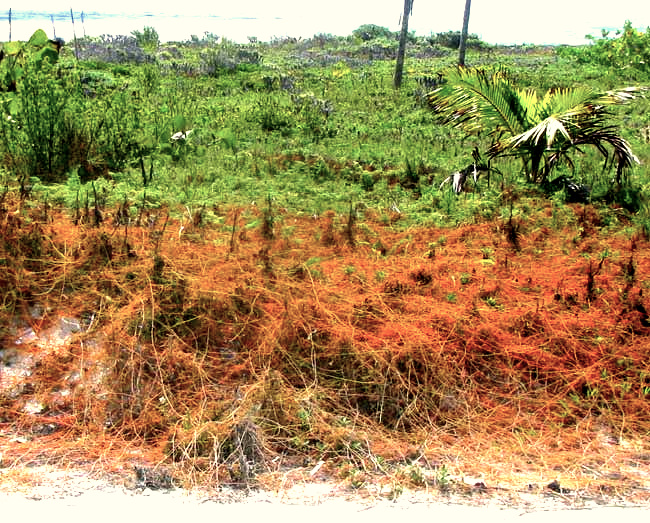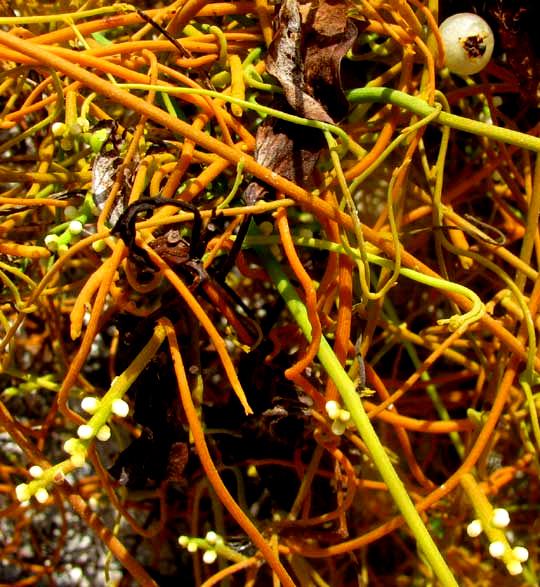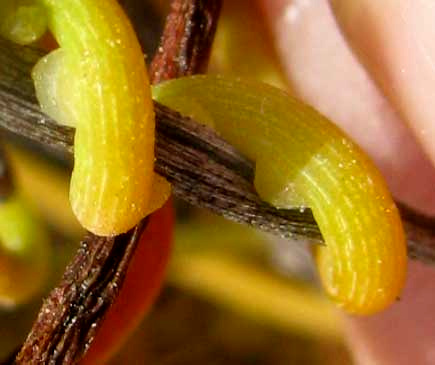Excerpts from Jim Conrad's
Naturalist Newsletter

from the May 29, 2011 Newsletter issued from Mayan Beach Garden Inn 20 kms north of Mahahual; Caribbean coastal beach and mangroves, ~N18.89°, ~W87.64°, Quintana Roo state, MÉXICO
BIG TANGLES OF LOVE VINE
Often along roadsides you see large, orange tangles spreading atop many kinds of plants, as shown above. There the tangle covers a dense population of Coastal Ragweed. A close-up showing the tangler's wiry, orange stems, some spikes of tiny, hardly open, white flowers and, in the upper, right corner, a white fruit, is below:

This is Love Vine, CASSYTHA FILIFORMIS, a member of the Laurel Family, the Lauraceae, and occurring in the tropics worldwide. It's partially or totally parasitic. As the species evolved the practice of robbing water and nutrients from plants it no longer needed leaves and chlorophyll for photosynthesis, so it evolved into nothing but orangish stems sometimes bearing flowers and fruits.
Love Vine steals its food by wrapping around a plant host and producing rootlike appendages known as haustoria that penetrate the host's stem, tapping into the stem's vascular system. You can see haustoria emerging from the side of a twining stem below:

When I first saw this common plant I thought it was one of the dodders, genus Cuscuta, which similarly parasitizes plants in North America. In fact, sometimes Love Vine is called Dodder-laurel. However, Colin Purrington in Pennsylvania corrected me, and I'm glad, because Love Vine is a conspicuous part of the flora here, and very interesting, with a long history of use in the traditional medicine of many countries, for a large number of ailments -- from indigestion, fever, malaria, piles, intenstinal worms and headache to the suppression of lactation after a stillbirth. It can also be used to make paste for paper-making, to providing a brown dye.